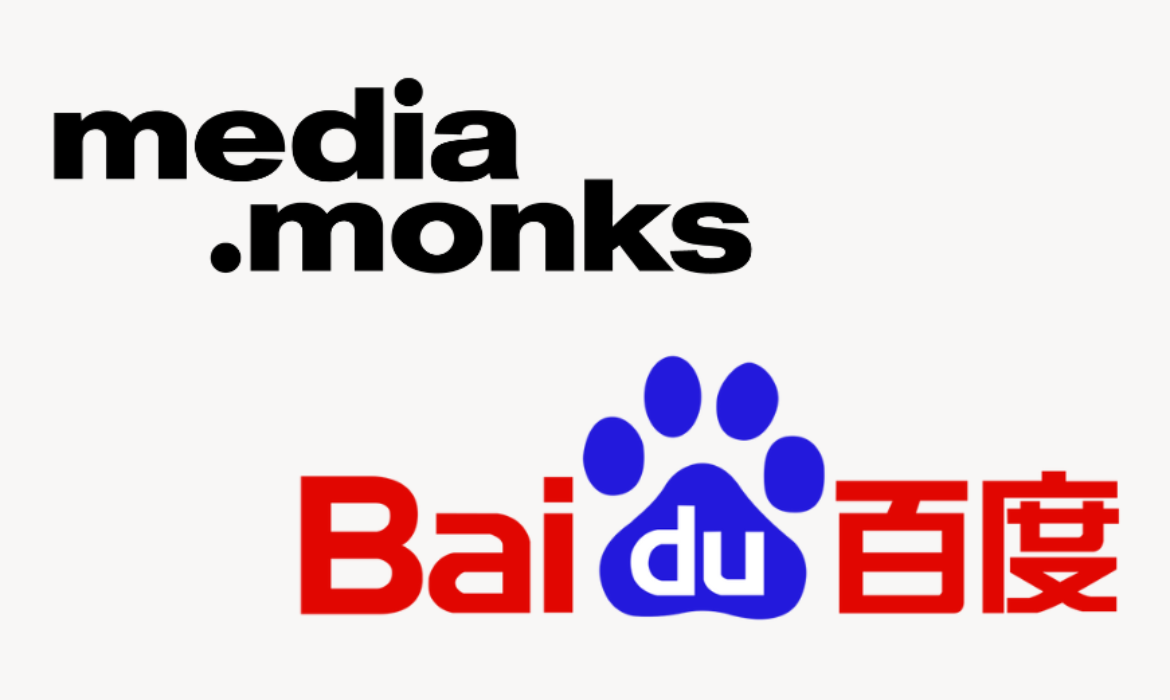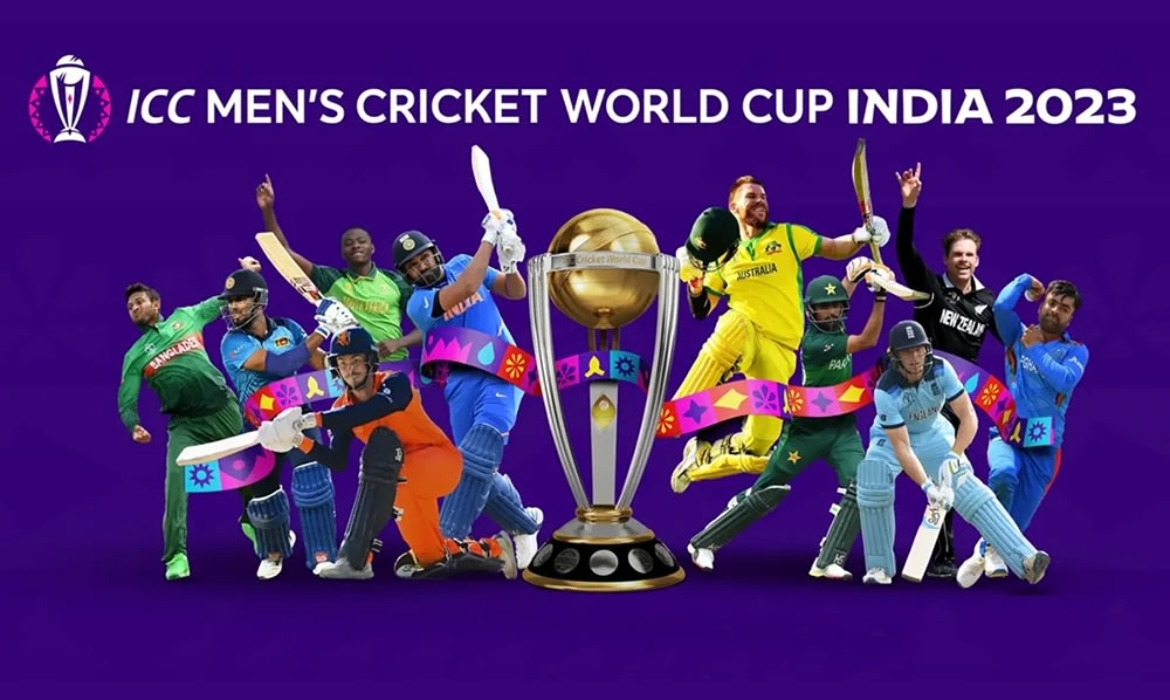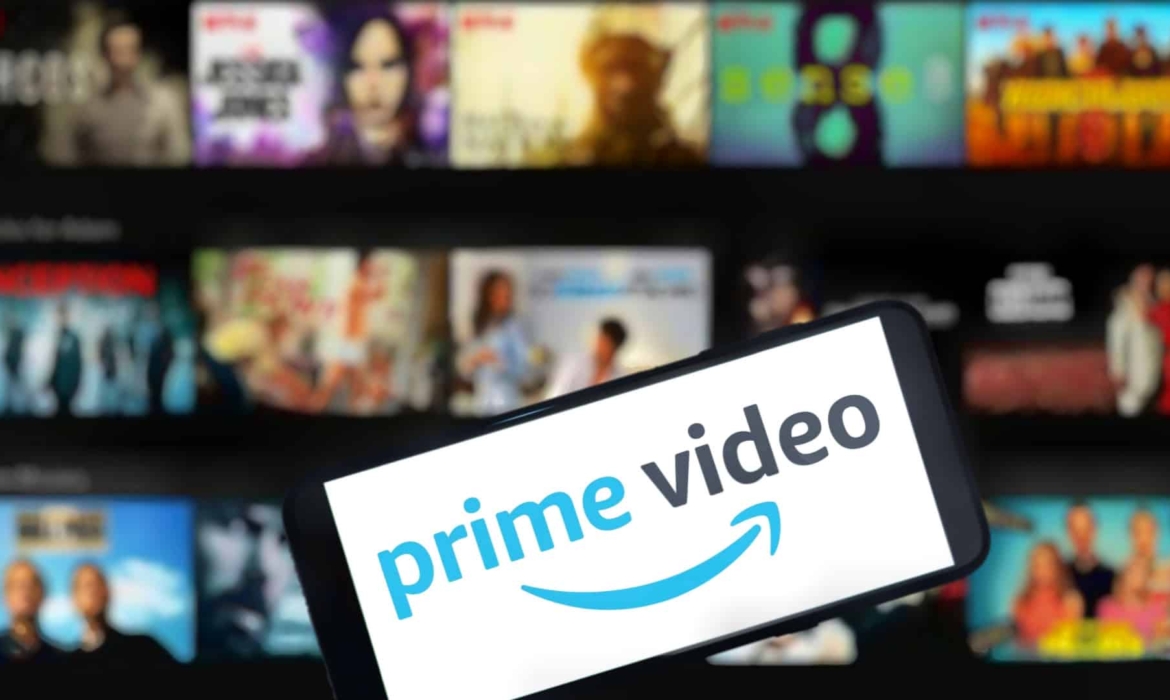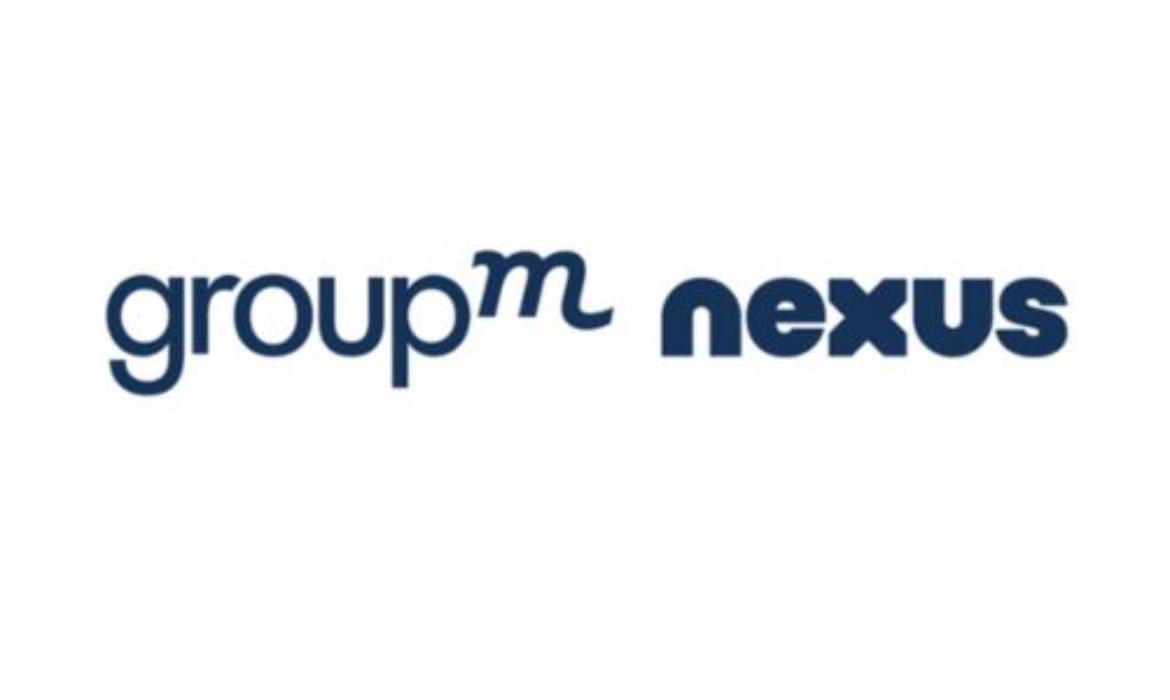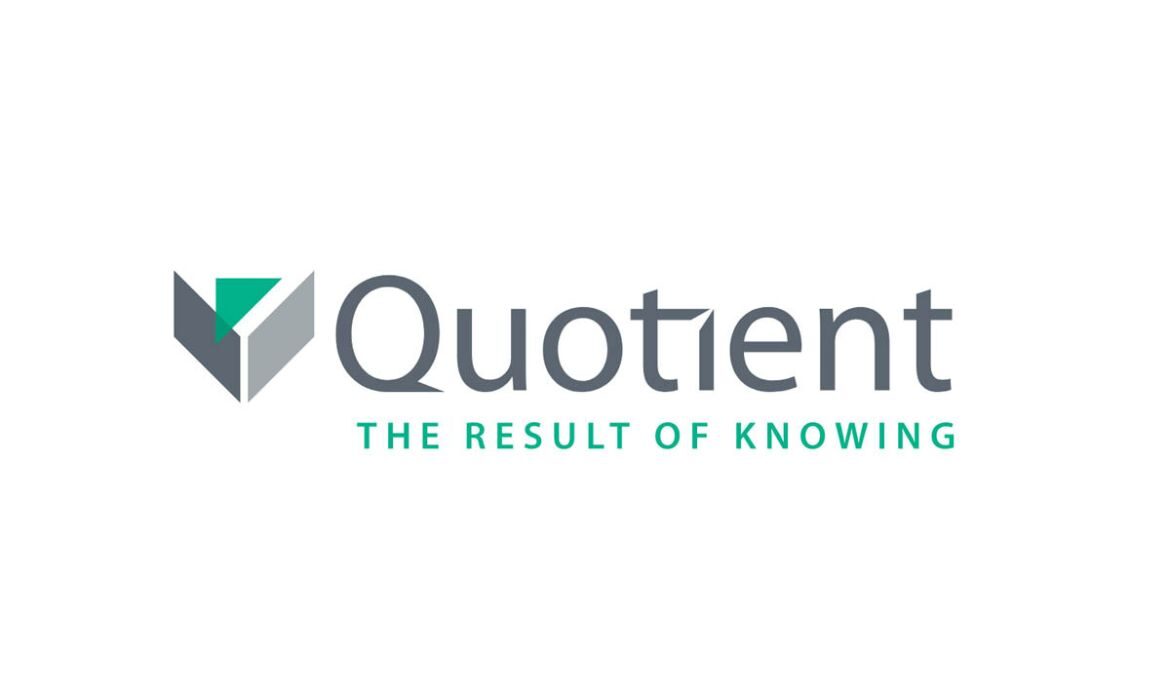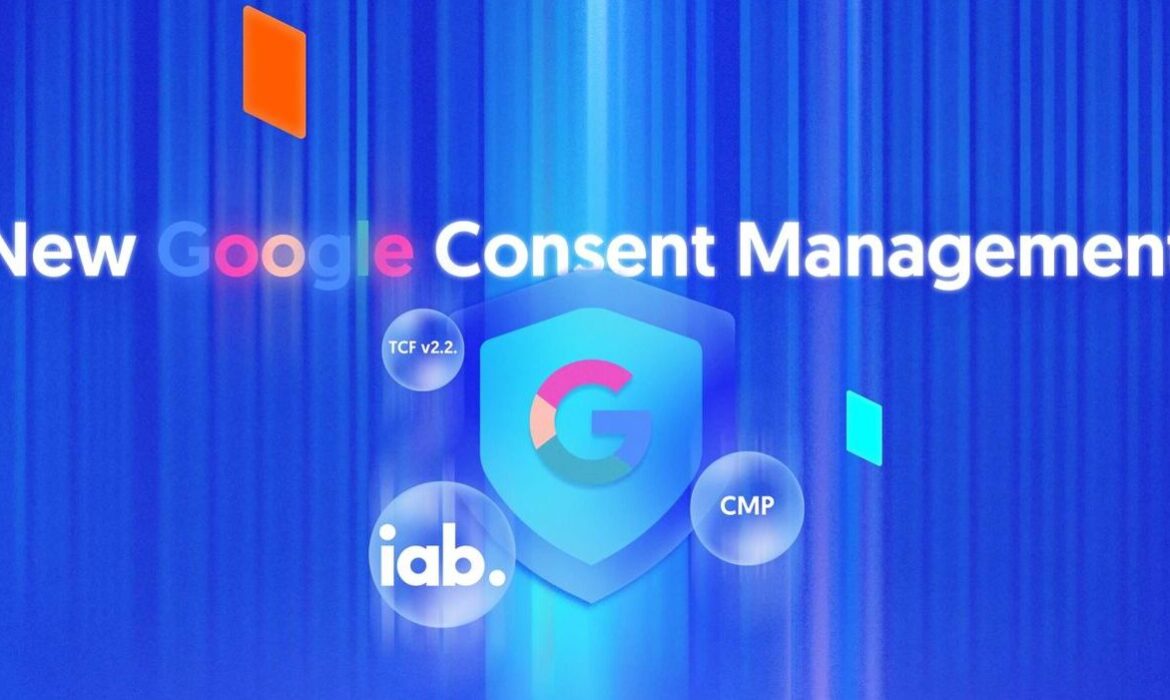Microsoft Advertising and Media.Monks Unlock New Opportunities in China
Microsoft Advertising and Media.Monks have bolstered their positions in China to support marketing, advertising, and advanced services in two different announcements. Artificial intelligence is used to support services in the majority of cases.
Microsoft Advertising ventures into the Chinese market
Microsoft Advertising and InMobi have declared their intention to extend their partnership into the Chinese mainland. With Microsoft Advertising’s native display and search capabilities, Chinese marketers can now leverage an integrated solution to improve their campaigns. Its enterprise and strategic sales, account management, marketing, finance, collection, and billing for customers in China will all benefit from the partnership.
This will expand upon Microsoft and InMobi’s already fruitful partnership, which was established in July 2018. Since then, it has grown to encompass Microsoft Advertising’s solutions in almost 75 nations and regions, including Africa, the Middle East, India, Southeast Asia, and now Mainland China. The biggest search and tech company in China, Baidu, competes with Microsoft Advertising in the area. Baidu incorporates AI into all of its platforms and tools for cloud services and advertising.
Here’s what they said
Charlie Liang, GM of InMobi China, and SVP of InMobi Group said,
This extended collaboration between Microsoft Advertising and InMobi in China will bring the best value across both organisations to marketers in the region, given China’s highly competitive marketers environment. InMobi China is well positioned to bring the best experience to advertisers with a deep understanding of China’s search and display ad markets, a customer-oriented product and business operation team, and Microsoft Advertising’s cutting-edge solutions.
Read More: Chinese AI Firm Baidu Debuts ERNIE 4.0 Chatbot Competing with GPT-4
Media.Monks partner with Baidu to strengthen its presence in China
S4 Capital plc’s operating brand, Media.Monks China announced a partnership with Baidu to support international brands hoping to succeed in the Chinese market. Media.Monks, as a premium partner, is in a unique position to enable brands to leverage Baidu’s demand in China, which goes beyond Search and Programmatic Display to include a range of products, including Baidu’s AI-driven Ad-tech products.
The Data and Digital Media team (DDM.monks) emerges as a reliable partner for both inbound and outbound clients across diverse industries in the ever-changing landscape of China’s digital market. DDM offers a wide range of services, with a focus on programmatic display, data solutions, paid search, paid social, managed media, and brand marketing. DDM assists clients in navigating the challenging world of digital marketing in China and around the world, producing significant outcomes and promoting long-term growth, from carrying out media strategy to attaining data-driven efficiency.
With this new partnership, Media.Monks China can now offer a wider range of products to brands on the market. To enhance their influence in this dynamic and quickly changing market, Media.Monks and Baidu plan to collaborate closely in related fields in the future. They will also provide superior services to a wide range of customers.
Here’s what they said
Emily Yaoli, Data and Digital Media China team lead at Media.Monks remarked,
We will help brands with an integrated marketing strategy targeting mass audiences in China, by leveraging Baidu’s profound AI-driven solutions.
Read more: Baidu unveils ERNIE, the AI-powered chatbot to ChatGPT
Havas ME’s Alejandro Fischer: Shaping Advertising’s Landscape with Tech Brilliance
In the ever-evolving landscape of media and advertising, we bring you an exclusive interview with Alejandro Fischer, the visionary Senior Vice President of Strategy and Product Innovation at Havas Middle East. With 13 years of industry expertise, he takes us on a journey through the dynamic realms of strategy, innovation, and the pivotal role technology plays in creating meaningful connections.
As an advocate for the next generation, he shares insights on embracing change and fostering curiosity.
Could you tell us about your background and experience in the advertising industry?
I began my journey in the world of digital media planning almost two decades ago and made the move to the Middle East 12 years ago. Always eager to volunteer for global new business pitches, I gained invaluable experience. Since joining Havas, I’ve navigated two major career shifts. The first involved transitioning from digital planning to a more upstream strategy role, focusing on broader challenges and media needs for our clients. The second shift led me to my current position, where I oversee multi-discipline strategy across Media, Creative, and PR for Havas Group in the Middle East.
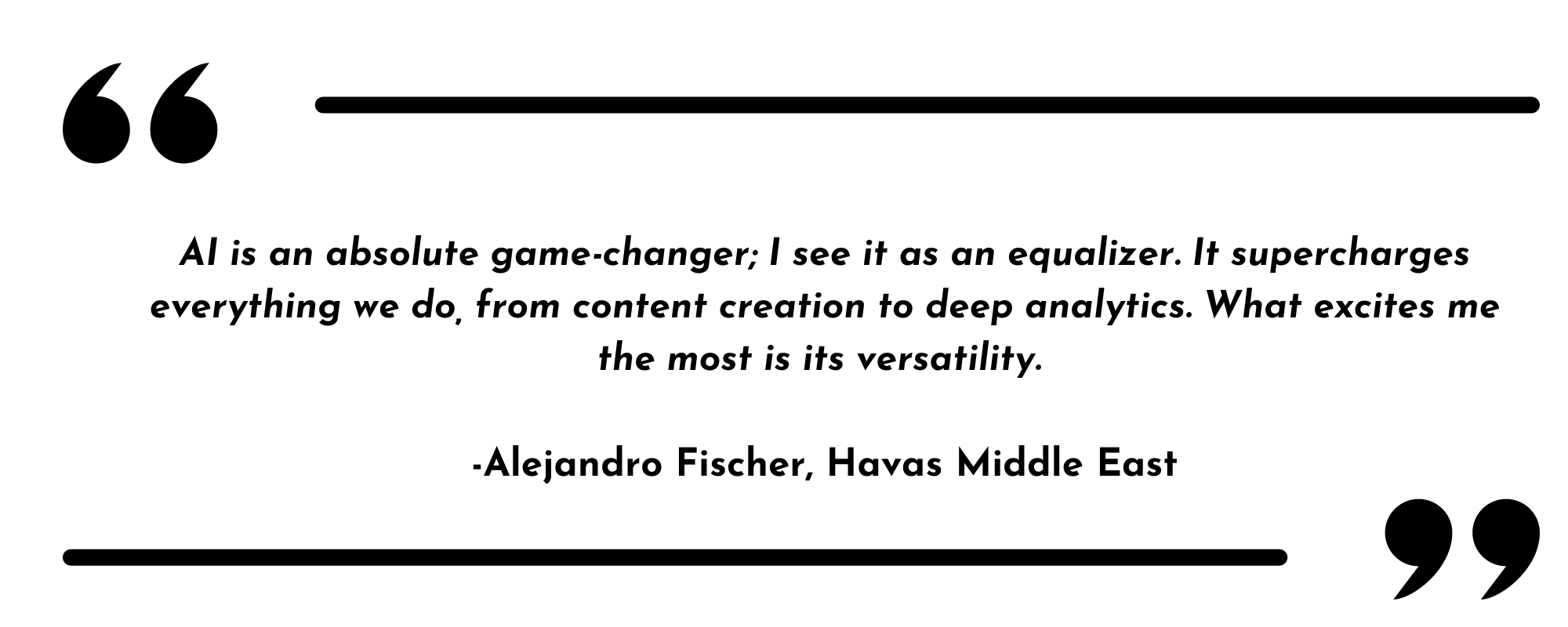
We see a lot of CGI-based advertising in the MENA region. How have technology, AI, and the Metaverse influenced and transformed the advertising landscape?
Questions about technology, whether it’s CGI or any other innovation, are inevitable. There’s often debate on whether certain tech applications are just trendy or even gimmicky. However, the reality is that we have a responsibility to understand and maximize the impact of the technology available to us. We’re in the business of connection. If a piece of tech has the power to spark desire or sell, it’s our job to explore its full potential.
In that light, AI is an absolute game-changer; I see it as an equalizer. It supercharges everything we do, from content creation to deep analytics. What excites me the most is its versatility. At Havas, we use AI for everything from the first visualization of an impossible idea to finding new segments and niche audiences and advanced media optimization. Far from replacing human creativity, it amplifies it.
How do you stay on top of not just technological changes, but also evolving consumer demands?
Staying ahead of trends requires an obsessive focus on people. I believe empathy is key; it’s crucial to continuously connect, interact, and get feedback from real people. At Havas, we have a unique capability for Insights and Market Intelligence. We’re constantly observing, questioning, and decoding shifts in consumer attitudes. We even venture into topics like frugality and social activism, questions that others in the market are not asking but should be.
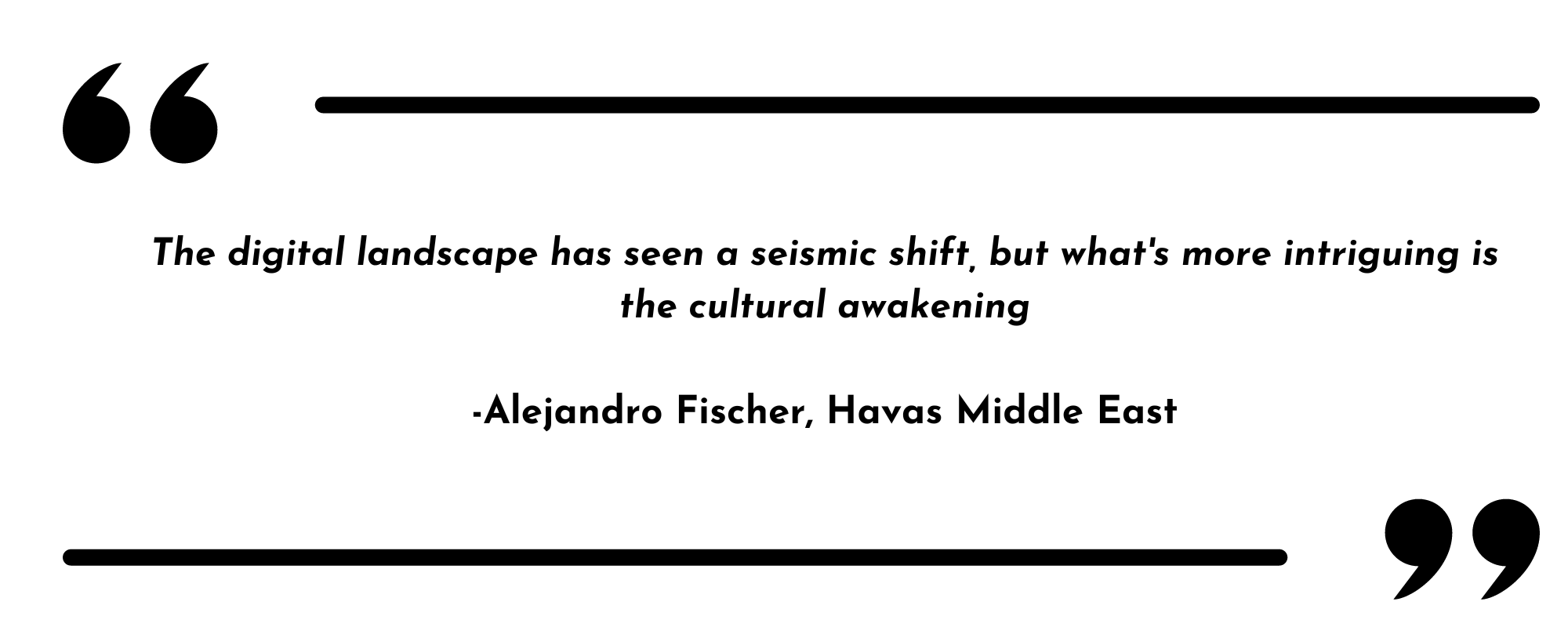
Can you discuss a recent successful campaign HAVAS Middle East deployed and what strategies you implemented to make it successful?
The Adidas Liquid Billboard campaign holds a special place for me. The challenge was to address the cultural barriers preventing women in the MENA region from swimming comfortably. We didn’t just promote a new swimwear line; we initiated a social movement through a swimmable billboard in Dubai. For me, it epitomizes what we aim for at Havas—meaningful impact.
What could you tell us about the Saudi Vision 2030 and how do you plan to make sure that HAVAS aligns with it?
Saudi is central to our growth strategy at Havas. For me, it’s about doing justice to the monumental transformation that the nation is undergoing. We need to challenge the old paradigms of engagement because audiences there are changing at a breakneck speed. Entrepreneurship is rising, arts and culture are becoming focal points, and the media landscape is fragmenting rapidly.
What are some of the shifts or changes that you have witnessed over your decade-long tenure in the MENA region?
The digital landscape has seen a seismic shift, but what’s more intriguing is the cultural awakening. Arts, social activism, and entrepreneurship are rising as dominant forces. The narratives are changing. This has deep implications for our industry, requiring a more nuanced approach to brand messaging and positioning.
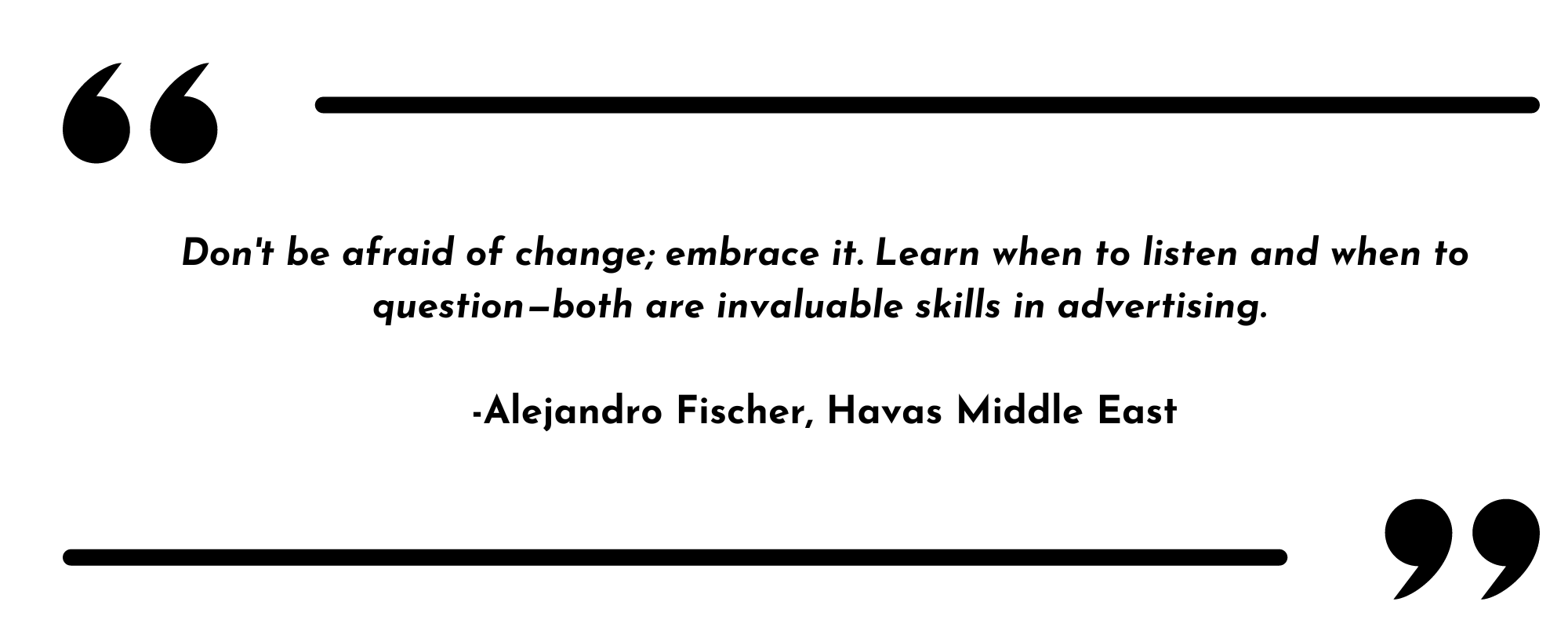
What are some of the key trends that you see emerging in the next few years and how do plan to approach them?
Two critical trends I see are the mainstreaming of AI and a growing focus on authentic social responsibility. Our approach is straightforward—stay ahead of the learning curve on tech while ensuring that we don’t lose sight of the ‘human’ in our campaigns. Meaningful change, driven by data and augmented by technology, will be our north star.
What tips would you provide to young professionals hoping to work in the advertising and marketing industry?
Don’t be afraid of change; embrace it. Learn when to listen and when to question—both are invaluable skills in advertising. Stay perpetually curious. Make it a point to learn something meaningful about every client and every industry you interact with.
Cricket’s Advertising Blitz: Boundaries Beyond the Game!
The holiday season is almost approaching. The ICC World Cup, which is going on at the moment, making this year’s displays exceptionally dazzling. After this, all eyes are on the advertising industry.
Upcoming events in the world of Sports and Cricket
Marketers are eager to leverage the cricket’s immense popularity, leading to increased competition on digital advertising platforms. Recent developments, including free streaming, innovative ad formats, and precise targeting options, have raised the bar for brand advertising during the tournaments, leaving many curious about the creative campaigns to come.
The Indian sports events market and the Cricket World Cup

Image credit- The Media Ant
The Indian Sports Events Market is anticipated to expand quickly. It is anticipated to have nearly doubled from 2021 to US $1 billion in 2023. Additionally, the market saw a 10% increase in sales in 2023, and a 4.04% CAGR is predicted through 2027. Cricket, a game that Indians love, dominates this sector. The Cricket World Cup is slated to present an unmissable opportunity for advertisers, providing front-and-center exposure to a sizable, engaged, and intensely devoted audience that exhibits a willingness to make purchases.
Cricket and Sports Marketing in India
India’s sports marketing has experienced a spectacular metamorphosis as a result of cricket’s enormous popularity. The most popular sport in the country, cricket, has significantly shaped the sports marketing scene.
The Advent of Digital Media in Sports Marketing
Digital media and streaming services have expanded sports marketing’s reach and engagement opportunities, enticing brands to invest in this lucrative field. Businesses are exploring endorsement deals, sponsorships, and innovative marketing tactics to tap into the passionate sports fanbase. Social media, streaming platforms, and fantasy sports apps offer targeted marketing options, enabling brands to reach specific demographics and boost visibility in the sports arena.
Brands can reach the appropriate audiences, at the right time, and in the right environment using programmatic advertising. Brand recall and brand visibility are two advertising KPIs that marketers can more easily attain than through more conventional media like TV and radio
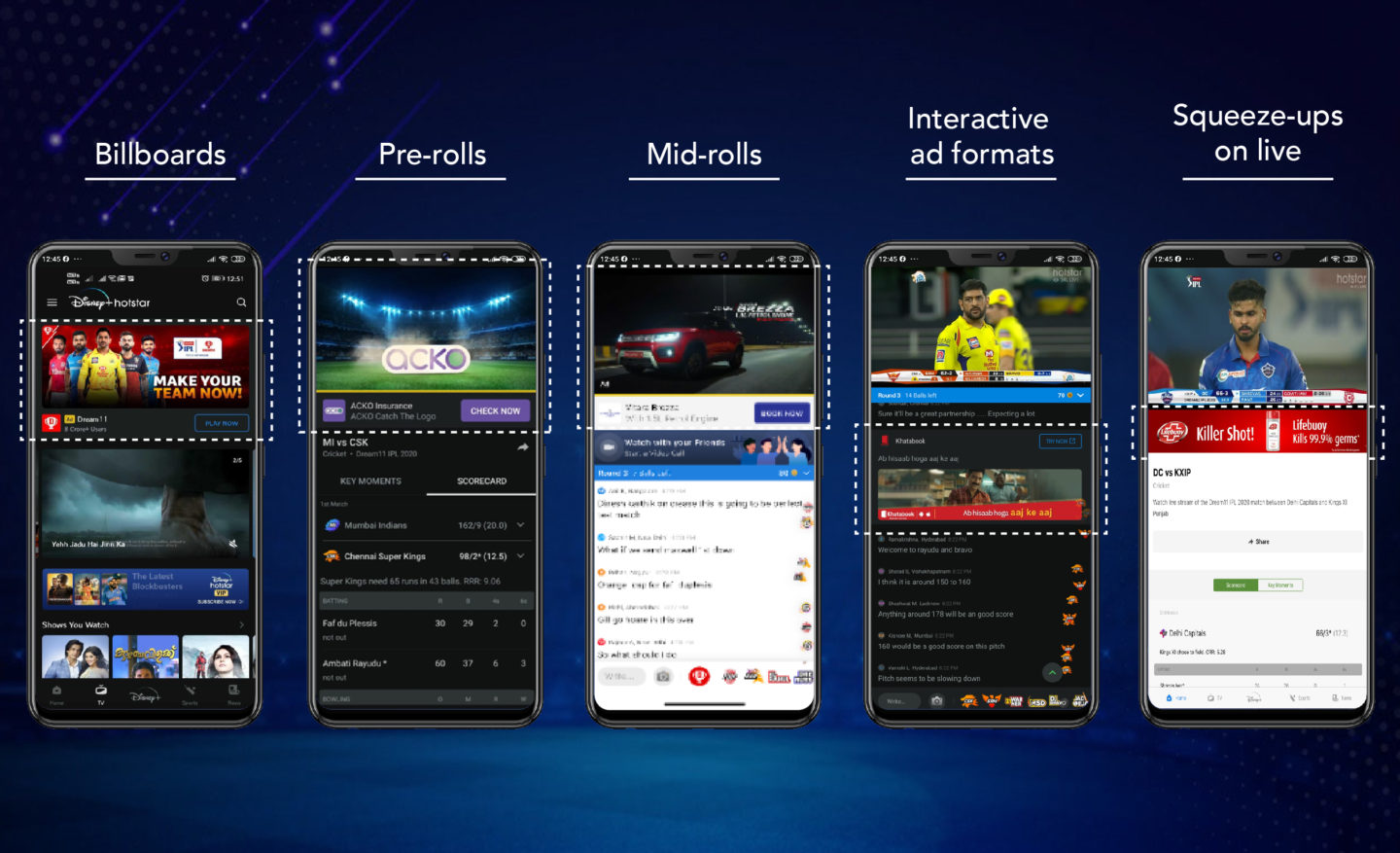
Image credit- Disney+ Hotstar
Rise of Digital Advertising in Sports
As India’s digitization progresses, Indians are increasingly turning to digital channels for watching the game, such as connected TV, cricket portals, and streaming platforms. As a result, marketers have been able to connect with millions of cricket fans online via various channels, giving them access to new digital advertising opportunities. It is fantastic for advertising, but there is a problem. These digital platforms attract a variety of demographics. They may not be relevant to the target market.

Image credit- Comscore
The Power of Cricket
For Indian TV viewers, cricket is no less than a daily soap opera. It is complete with drama, predictable results, humorous anecdotes, and even some heartbreaking scenes. How can the advertising industry avoid becoming involved when one sports genre has more viewers than the majority of other sports combined? The ad firms see more and more opportunities to be linked with the game as it develops, whether it is putting the brand’s logo on a player’s bat or creating a full-fledged commercial centered on cricket.
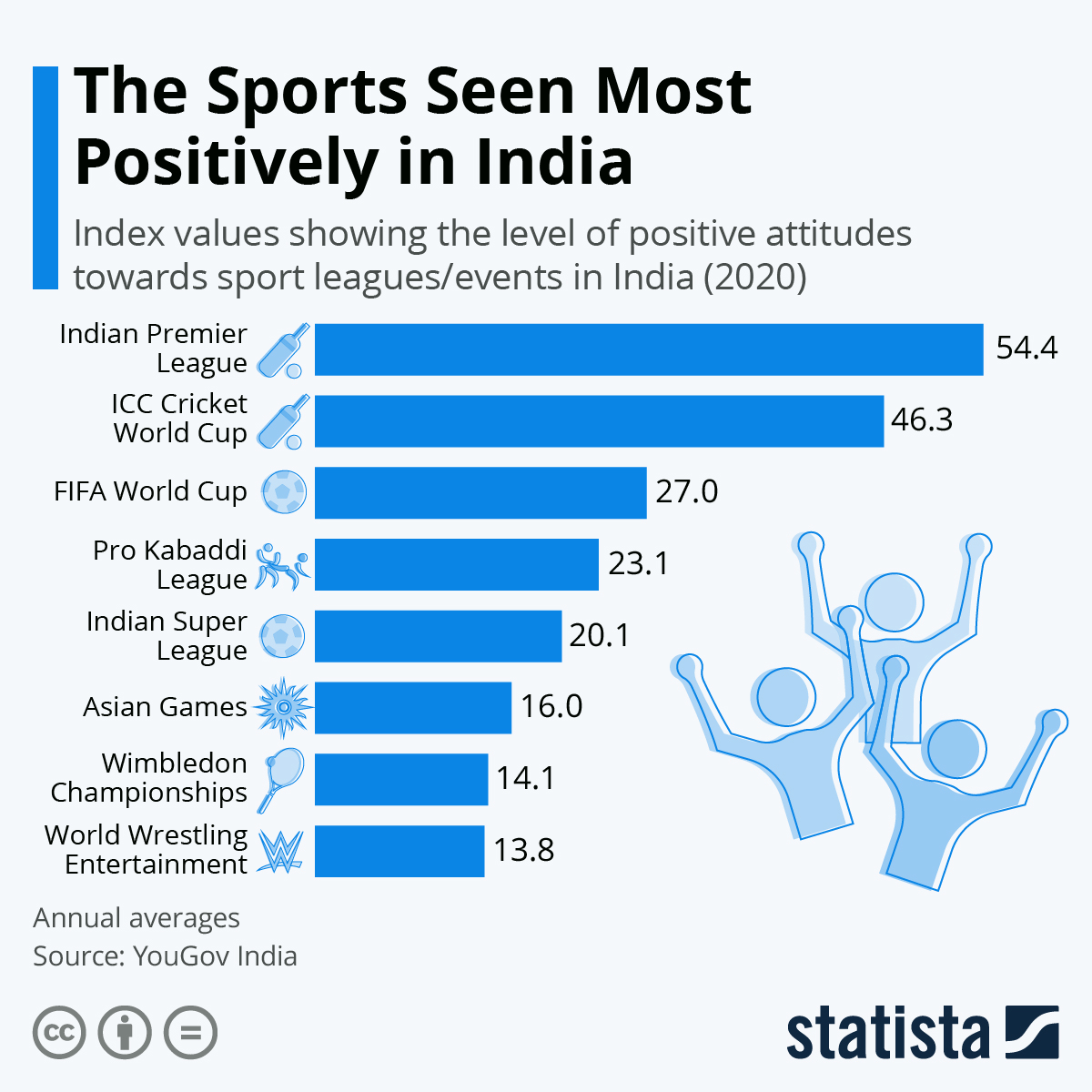
Image credit- Statista
Read More: An Innovative Triumph: Burger King x Stevenage FC Case Study
Why Scoring Big on Your Branding During Cricket Matches is a Game Changer
Let’s take a brief look at how advertisers profit from running ads during the busiest time of the cricket season and in between games.
- Brand Awareness: Live streaming contributes to the expansion of the audience and the brand’s personality. Streaming sporting events aids in attracting a sizable audience.
- Interact with the brand: By using live streaming, brands may create a lasting connection with their audience. It encourages an authentic relationship that viewers can reach from their homes or anyplace else.
- Emotional connection: During any cricket match, people’s passion and emotions are at their peak. It has a significant and enduring psychological effect on the audience.
- Massive Viewership: Advertising during a cricket match provides a huge viewership pool, providing firms unrestricted ad mileage.
- ROI without interruptions: Cricket commercials give advertisers a way to support their companies’ ongoing ROI.
- Engagement: Advertising during live cricket matches provides outstanding engagement with related material, including highlights from pre- and post-live shows.
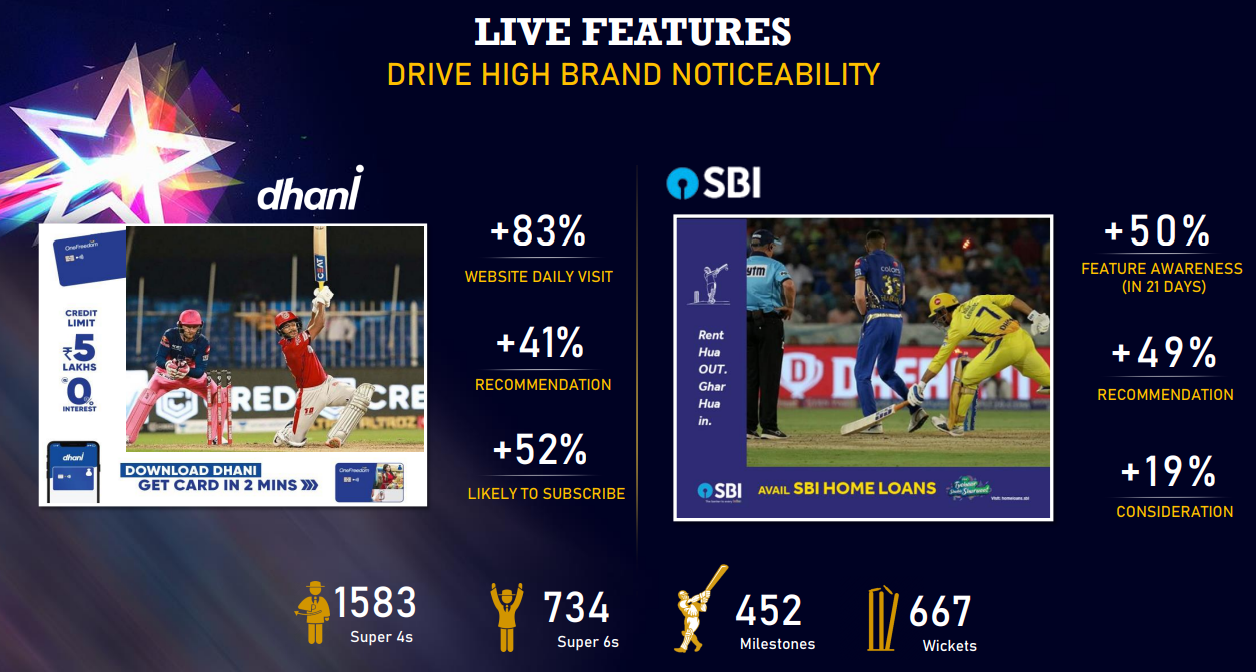
Image credit- The Media Ant
The Money Game
Making campaigns, especially for a competition, and focusing more of their promotion on the game while putting their products on hold is truly a major risk that firms take. Do they succeed, though? Brands truly began investing in cricket during the 1996 World Cup. The International Cricket Council (ICC) received 900 crores (9 billion) in advertising revenue. Additionally, during the 2011 World Cup, it grew to nearly 15 billion. The BCCI started charging 2 crores every match for title sponsorship, which has since increased to 3.8 crores per match due to the massive amount of money coming in from ads. Imagine that the BCCI will charge INR 11.4 Cr for a tri-series (3 matches), only from title sponsors, plus other sponsorships for television, goods, drinks, and more.
IPL- The advertising haven
With millions of supporters, cricket occupies a special place in Indian sports culture. The Indian Premier League (IPL) has transformed cricket and sports marketing in India. The fast-paced and exciting format enthralled the Indian audience. Since then, it has developed into a marketing phenomenon that has drawn significant investment from powerful corporations and advertisers.
According to statistics, the IPL 2022 produced over
- USD 520 million in advertising revenue.
- Over 300 million people watched the games.
In contrast, IPL 2023 received
- 1.47 billion video views on its first weekend.
- 32 million people watched the last match live on Jio Cinema.
- More than 550 million spectators.
- 61% of IPL watchers used smartphones.
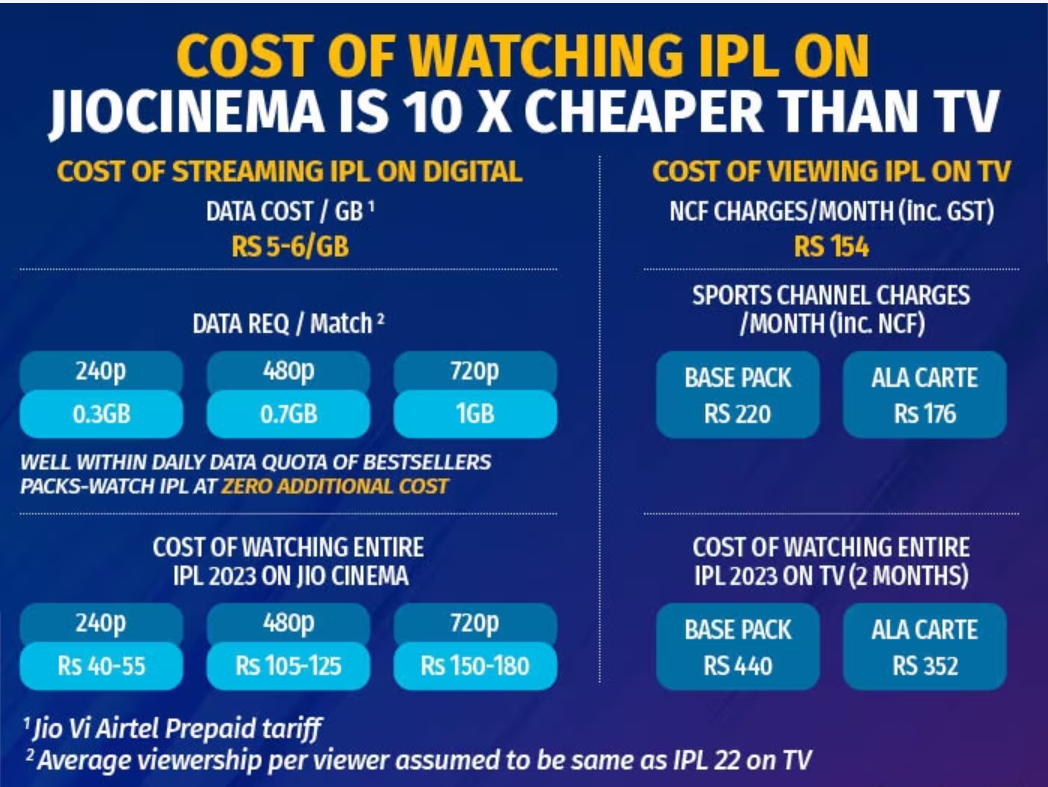
Image credit- Storyboard18
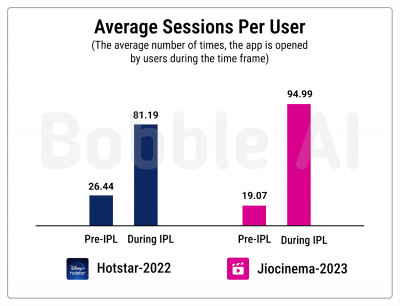
Image credit- AdGully
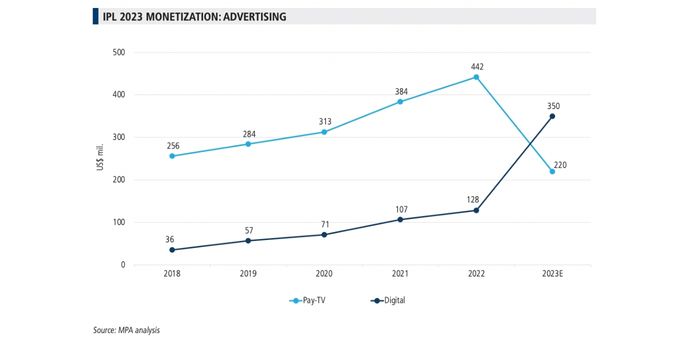
Image credit- MediaBrief
Making advertising more effective with hand-selected audiences and measurable results
There are two different types of brands when it comes to cricket advertising-
- Includes people who think that brands are based on cricket.
- Those who believe the price is too high.
Cricket advertising provides a chance for brand recall as well as a way to assess the immediate effects on enterprises. Technology and cricket have been combined to provide data-driven insights that enable marketers to assess the immediate effects of their advertising initiatives. Advertisers can determine whether cricket has a real impact on a brand’s financial line by examining website traffic, concurrency, and conversions during certain cricket tournaments. Cricket serves as a catalyst for company success as well as a platform for brand building.
Read More: Cracking the CRED Code: A Deep Dive into its Advertising Mastery
Dentsu Pioneers Audience Acquisition with VideoAmp Partnership
In an industry-first activation, Dentsu and VideoAmp have given their US media agencies the ability to seamlessly guarantee crucial audience acquisition across seven key media portfolios. As the first agency, Dentsu has intentionally purchased audiences on VideoAmp Currency that are assured across publishers like A+E Networks, FOX Corp, Hallmark Media, NBCUniversal, Paramount, and Warner Bros. Discovery. Utilizing Dentsu’s platform, advertisers will be able to create audience-reaching strategies as well as assurances of reach and frequency. The objective is to incorporate Dentsu’s exclusive audience datasets into a new market asset that might be traded. In light of its customized audience profiles, Dentsu will be able to plan and allocate linear TV advertising buys.
Dentsu’s Data-Enabled Linear TV Activation
Clients can now transact and guarantee on the same advanced audiences generated within Dentsu’s Merkury ecosystem that they now plan and optimize against, across seven major publishers, through Dentsu’s Data Enabled Linear TV Activation (DELTA) platform, powered by VideoAmp’s leading large dataset. With clients already using this new activation, advertisers can now improve results and increase return on investment. DELTA uses VideoAmp to provide advertisers with a streamlined planning and measuring solution. Insights and data on currency grades are also accessible. As a result, premium publishers can more effectively reach an advertiser’s intended demographic and optimize media spend. Although DELTA and DELTA+ are intended to use Dentsu’s exclusive audience data, the company can also use a client’s first-party audience data or data from other third parties if that is what the client prefers.
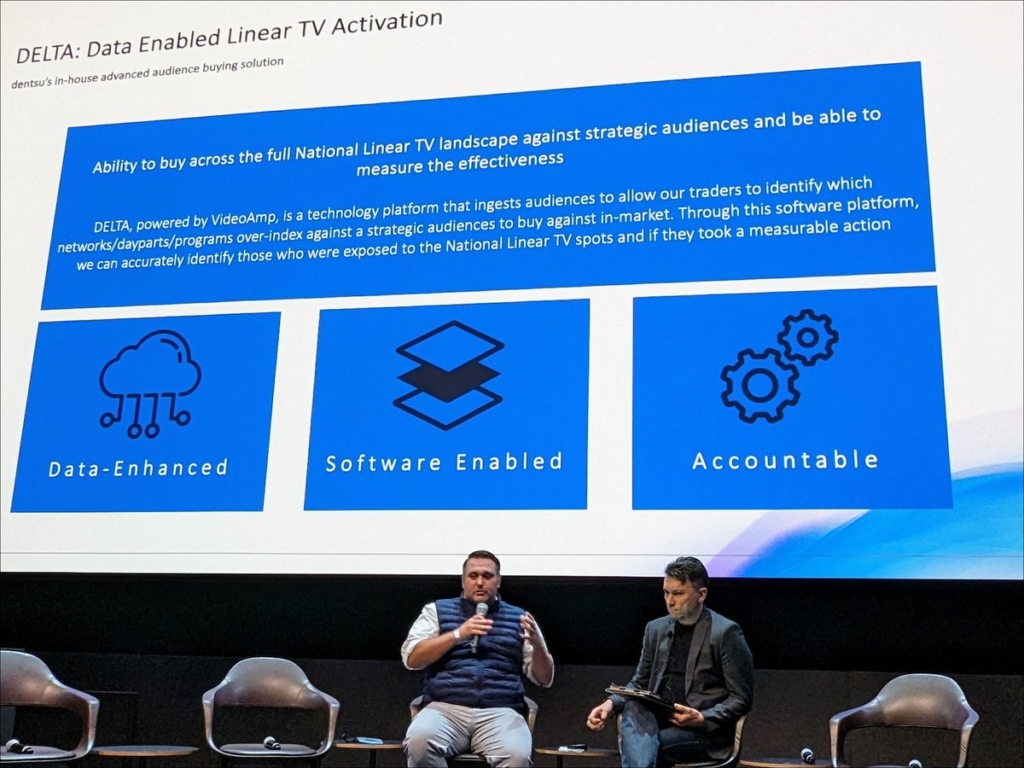
Image credit- MediaPost
Read More: Shopify Audiences Expands Ad Targeting Capabilities with New Integrations
Dentsu – VideoAmp’s guaranteed audience acquisition
Dentsu and VideoAmp have collaborated since 2021. To test audience measurement technology on Paramount Global properties, the two collaborated. As the market transitions to more data-driven linear TV buys, DELTA and VideoAmp have been leading the way. It is also Dentsu’s DELTA team’s most recent statement as it works to lead the industry in mapping alternative currencies to sophisticated audiences. In recent years, advertisers, TV networks, and media companies have struggled to account for customers who are increasingly dispersed across a variety of media outlets. Because many prominent marketers demanded an unbiased third party to count customers drawn to a certain media property, Nielsen has ruled for decades. However, TV firms have criticized Nielsen’s haste in coming up with a new solution, even as viewers of linear TV switch to broadband streaming.
Here’s what they said
Brad Stockton, SVP, of Video Innovation, Dentsu Media US said,
As we look to the future of seamless video investment for our clients, this innovative advancement represents a positive shift in the marketplace, enabling advertisers to more effectively reach more valuable audiences in premium placements. This is our latest effort to drive adoption of alternative currencies as we seek to build out a unified investment approach rooted in the same source of truth through DELTA.
Ross McCray, Founder & CEO of VideoAmp added,
The growth that we’ve been able to achieve since we first engaged with dentsu on currency in 2021 is incredible. Moving past testing to this kind of scale is a testament to the DELTA team and their commitment to providing clients with the benefits of using an advanced currency. This is just the start and we look forward to collectively helping advertisers make their media investments work harder and smarter to achieve the business outcomes that matter most to them.
Marybeth Strobel, Executive Vice President, Ad Sales at Warner Bros. Discovery commented,
This latest advancement between dentsu and VideoAmp marks an exciting step forward for our industry in enabling advertisers to transact against advanced audiences at scale, an approach we fully embrace at Warner Bros. Discovery. By leveraging these innovative solutions in audience-based buying, advertisers can better leverage Warner Bros. Discovery’s suite of premium IP, brands, franchises and coveted audiences and ensure the impact of their investment is more fully captured.
Read More: Paramount to Utilize iSpot As Currency Measurements for TV Ads
Roman Olivarez: From Films to Ads, A Creative Journey with MullenLowe TREYNA
Meet Roman Carlo Olivarez, the award-winning Executive Creative Director at MullenLowe TREYNA, Philippines. Formerly rooted in TV and Film production, Roman’s diverse creative journey spans roles as a cinematographer, director, producer, writer, and even a child star. His extensive accolades include Cannes Lions, Spikes Asia, WARC, and more. Beyond advertising, Roman has made his mark in film festivals like Cinemalaya Philippine Independent and Cinema One Originals.
In this exclusive and candid interview, delve into the insights and creative brilliance of this multifaceted industry trailblazer.
Can you tell us about your journey from TV and film production to advertising? What inspired you to make this transition?
Six years into my TV and film production career, I completed my first full-length film with support from Cinema One Originals. A colleague from a freelance project then approached me with an interesting proposition to join an advertising agency. Intrigued by the prospect of creating iconic TV commercials, I decided to seize the opportunity. Thankfully, I’m still in the game, passionately crafting ads and relishing the experience.
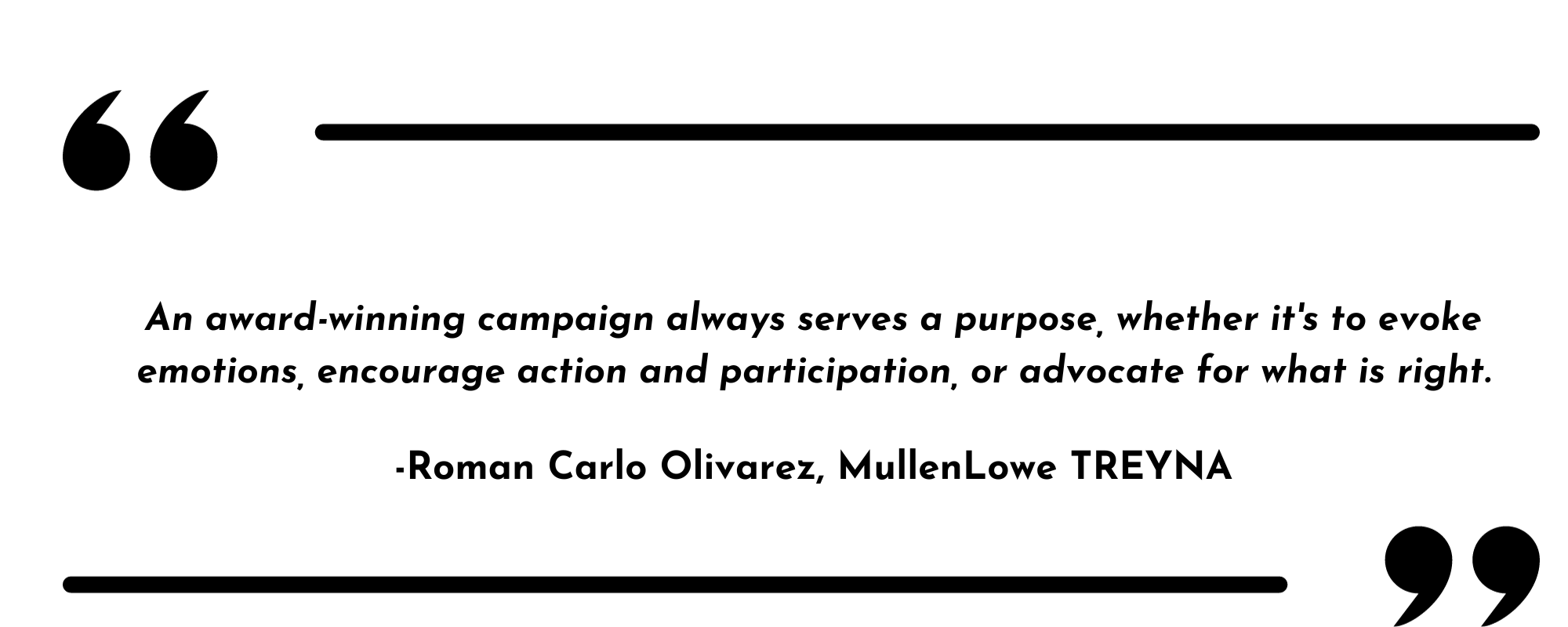
Could you share some insights into the award-winning campaigns you’ve worked on and would you highlight your favorite campaign? What were the key factors that contributed to their success?
An award-winning campaign always serves a purpose, whether it’s to evoke emotions, encourage action and participation, or advocate for what is right.
My recent favorite campaign is our collaboration with the Quezon City government on the Right to Care card (RTC). As we are aware, the Philippines is among the last countries globally that does not recognize same-sex unions. This lack of recognition means that long-time partners are denied the right to make medical decisions and provide care for each other. In response, we devised a solution to bridge this legal gap—the RTC card. This pocket-sized special power of attorney serves as proof for LGBTQIA+ couples to be acknowledged as the next-of-kin of the patient in hospitals. The response has been overwhelming, with hundreds of couples now equipped with RTC cards. Other cities are joining forces to bring this initiative to their communities. What stands out to me in the success of this campaign is our ability to find a creative solution, ultimately transforming lives for the better.
Here is one of the news pickups we got for the campaign.
Can you share your thoughts on the current advertising landscape in the Philippines and any trends or opportunities you see for the industry in the near future that you also incorporate in your work?
The rise of Generative AI is a noteworthy trend, and its potential as a substantial opportunity depends on how the industry embraces it. The remarkable possibilities of using data intelligently and creatively are evident in the initial executions. I’m eager to see how generative AI will redefine our constantly evolving industry.
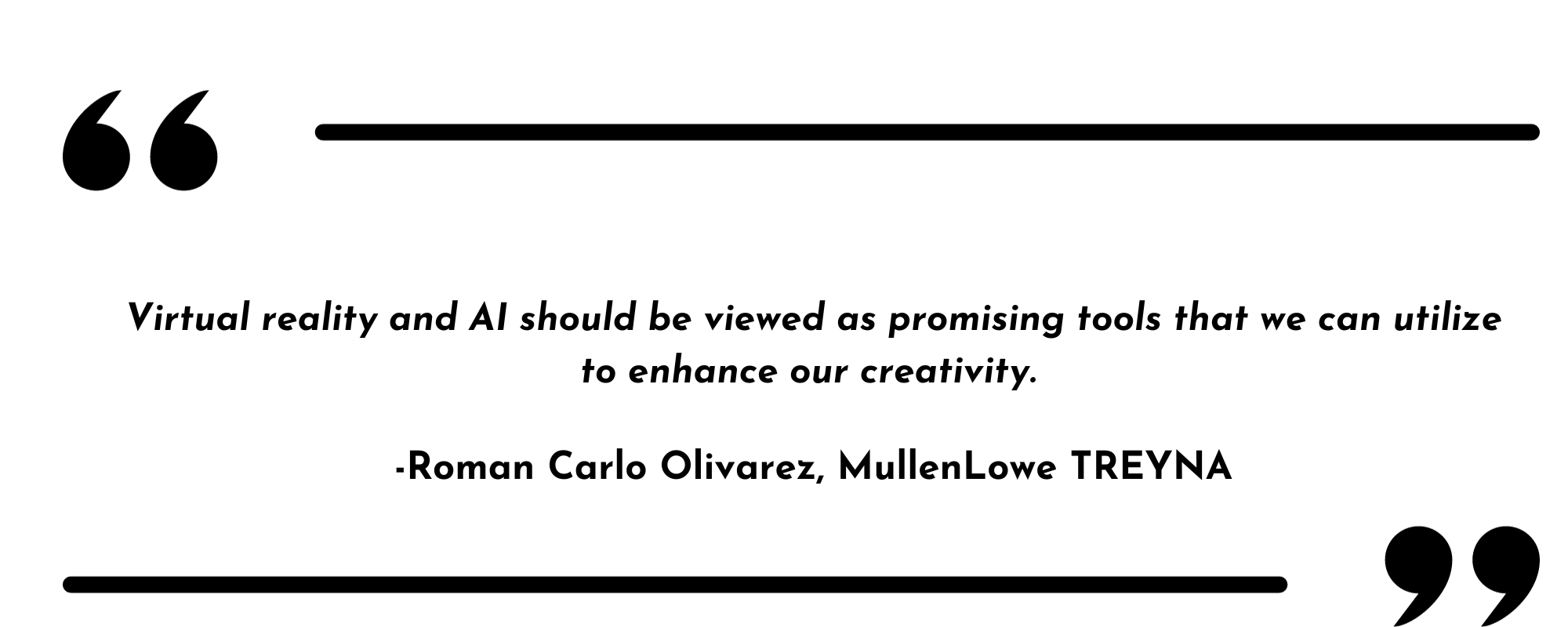
With the rapid evolution of technology, including AI and virtual reality, how do you envision the role of creativity in advertising changing in the coming years?
Virtual reality and AI should be viewed as promising tools that we can utilize to enhance our creativity. Recall the shift from film to digital photography or the transition from literal presentation boards to desktop computers. These innovations propelled creativity forward by simplifying the industry’s focus on the power of the idea and introducing new avenues for delivering ideas in innovative ways.
Given your background in TV and film, do you see any unique storytelling techniques or approaches from those industries that you’ve successfully applied to your advertising work?
Storytelling forms the basis of effective communication. My prior experience played a crucial role in my shift to branded storytelling. Discovering that golden insight that makes you exclaim, “wow, that’s surprisingly true!” is key because exceptional stories always evoke that “aha” moment while maintaining a quietly relatable essence.
What is the most unconventional or out-of-the-box idea you’ve ever pitched to a client, and how did they react? Did it ultimately become a successful campaign?
One of the unconventional approaches we took was using the ghosts of Filipino national heroes to inspire voter registration. When this idea was shared during our brainstorming session, I immediately knew it was the one. (*laughs*)
It stemmed from the insight that registering to vote is actually easy, something one should do for the country. However, despite the simplicity, people still don’t. So, we employed a guilt-tripping approach through our late heroes—the ones who sacrificed their lives for the freedom of the entire nation. The results of the campaign were astounding, even surpassing the KPI for newly registered voters, totaling 5.9 million.
Finally, what is the most exciting or innovative project you’re currently working on at MullenLowe Treyna, and what can we expect from you and your team in the near future?
Exciting developments are underway, and as usual, much of it is under wraps. Haha! So, people can anticipate more projects from us featuring inherently creative solutions. We approach client business challenges with the mindset of “positive dissatisfaction,” which serves as our guiding principle. Here’s hoping it makes a positive impact on the world or simply adds a bit more fun, one campaign at a time.
IAB Tech Lab Launches Two Working Groups for AI and Privacy Sandbox
IAB Tech Lab, an international body that develops technical standards for digital advertising, recently announced the formation of two innovative working groups. These organizations will be crucial in determining how advertising and digital media develop in the future. They are the Artificial Intelligence (AI) Subcommittee and the Privacy Sandbox Task Force. These duo-functioning groups will enhance AI in digital media and steer Chrome Browser’s Privacy Sandbox changes.
Background
Since its launch in 2019, the Chrome Privacy Sandbox has been extremely active. But Google Chrome says third-party cookies must be deleted by Q2 2022. However, the due date was advanced. Chrome third-party cookies are expected to perish in the second half of 2024. As the finish line keeps fading from view, it is becoming increasingly difficult for people to sustain their enthusiasm for post-cookie experimentation. But with the formation of the Privacy Sandbox Task Force, the IAB Tech Lab is on it. It will experiment with Chrome APIs and communicate its findings to the market. Below are some insights and goals that the AI and Privacy Sandbox working groups will look to fulfill.
Read More: Google’s Phasing Out of Third-Party Cookies: A Paradigm Shift in Digital Advertising
Privacy Sandbox Task Force
IAB Tech Lab established the Privacy Sandbox Task Force since the evolving Privacy Sandbox within Google’s Chrome browser represents a critical turning point for digital advertising. The specialist task force’s goal is to conduct a thorough technical and operational review of the upcoming Privacy Sandbox improvements and their implications for use cases in digital advertising.
The key objectives include:
Technical analysis
To comprehend the consequences for advertisers, publishers, and ad tech providers, the task force will explore the technical details of Google Chrome’s Privacy Sandbox enhancements. These will include the protected audience API and the Attribution Reporting API.
Operations Perspective
It will analyze operational changes that digital advertising stakeholders need to adjust to maintain consistency in the delivery, optimization, and measurement of digital ads.
Analysis of gaps
Using the Privacy Sandbox, it will analyze, comprehend, and document important advertising use cases that brands and publishers can benefit from. In addition, it will suggest improvements in order to fill any gaps.
Recommendations
To handle the changes the Chrome browser brings forth, it will provide practical advice and update current or propose new technological standards for the digital advertising ecosystem. Later this year, the Task Force will release its findings and suggestions for the industry.
Privacy Sandbox Task Force Members
All IAB Tech Lab members are invited to join the Privacy Sandbox Task Force. Moreover, participants from all international digital advertising stakeholders who have tested or studied the Privacy Sandbox proposals are encouraged to do so. In order to successfully navigate this enormous change in the advertising industry, collaborative engagement will be essential.
Read More: Advertisers Embrace Programmatic Advertising As Cookies Decline
Artificial Intelligence (AI) Subcommittee
The AI Subcommittee was established as a result of AI’s radical changes to the world of digital media. A small group of IAB Tech Lab Board members make up this subcommittee. It will focus on the fast-evolving AI technology and digital media landscape interface. The AI Subcommittee’s key objectives include:
Roadmap creation
Developing near-term, short-term, and long-term roadmap goals to address the effect of AI on the digital media ecosystem, with a preliminary focus on media companies.
Developing an ethical framework
By developing new technical frameworks and standards, it will address the ethical issues raised by the use of AI in the media. It will further ensure that user privacy protection, and content reliability and transparency.
Media Trends Analysis using AI
Doing a thorough investigation of AI-driven media trends, including deep-fake technologies, virtual reality, generative AI, and content recommendation algorithms.
AI Subcommittee Members
The AI Subcommittee is open only to IAB Tech Lab Board Members. It brings together data scientists, publisher executives, cryptographers, and technology leaders from publishers, agencies, and big tech platforms to work together on defining an informed, moral, and exciting future for AI in digital media.
Here’s what they said
Anthony Katsur, CEO of IAB Tech Lab said,
Given their worldwide market share of approximately 65%, understanding the shifts brought about by Chrome’s Privacy Sandbox development is crucial. AI is not just a technological tool; it’s a force reshaping our media landscape. Its impact extends across content creation, distribution, consumption, consumer privacy, and monetization. The AI Subcommittee is poised to assume a vital role in comprehending and directing Tech Lab’s AI roadmap to manage this evolution.
About IAB Technology Laboratory
The IAB Technologies Laboratory (Tech Lab) is a non-profit organization founded in 2014. It collaborates with a member community on a global scale to create the fundamental standards and technologies necessary for the development of the digital media ecosystem’s growth and trust. Digital publishers, advertising technology companies, agencies, marketers, and other member organizations make up the IAB Tech Lab. Furthermore, it focuses on solutions for brand safety and ad fraud, identity, data, and consumer privacy, ad experiences and measurement, and programmatic efficacy. Project Rearc, an endeavor for privacy-centric addressability, the OpenRTB real-time bidding protocol, the ads.txt anti-fraud specification, the Open Measurement SDK for viewability and verification, the VAST video specification, and other work are among its accomplishments.
Read More: Publicis Media, UK AOP To Test Privacy-Enhancing Technology (PETs)
Amazon Prime Video to Introduce Limited Ads in 2024
Starting next year, Amazon will start incorporating a limited number of advertisements into the content available on its Prime Video streaming service, including movies and television shows. Amazon Prime customers in the UK, as well as in the US, Germany, and Canada, will encounter ads unless they choose to pay for an additional “ad-free” subscription option.
Why is it significant: Rival streaming platforms like Disney+, Netflix and NBCUniversal’s Peacock have introduced ad-supported tiers to boost revenue and attract more subscribers. Amazon, facing layoffs in its advertising division, is now prioritizing investments in original content like shows, concerts, and live sports, aiming to capitalize on premium advertising opportunities.
Amazon said, “To continue investing in compelling content and keep increasing that investment over a long period of time, starting in 2024, Prime Video shows and movies will include limited advertisements in the UK.”
Read More: Finally Coming! Netflix Reveals Ad Plan Price- Know Everything Here
Details: The company stated that they aim to have meaningfully fewer ads than linear TV and other streaming TV providers. Later in 2024, the ads will be introduced in France, Italy, Spain, Mexico, and Australia, following the introduction in the previously mentioned markets.
-The company said there would be no changes in 2024 to the current price of Prime membership.
-It will roll out the “ad-free” subscription tier for an extra $2.99 (£2.44) per month for Prime subscribers in the United States.
-Amazon will include fewer ads on Prime Video than traditional TV and streaming services, but the exact frequency remains unspecified.
-The company will notify Prime members through email several weeks before introducing ads on Prime Video, along with instructions on how to opt out of them.
-Pricing information for Amazon’s ad-free subscription tier in other countries will be disclosed later.
More opportunities: In April, Amazon expressed confidence in the advertising sector’s potential. The company is not only exploring additional advertising avenues on Prime Video but is also actively developing tools for digital marketers to incorporate AI-generated images and videos into their ad campaigns. While this advancement has the potential to enhance product listings and sales, a specific timeline for its implementation has not been confirmed. Furthermore, ad tiers can prove more profitable as they have the potential to increase revenue per subscriber.
Read More: Disney+ Hotstar Amp Brand Outreach With CTV Targeting
GroupM Nexus Launches Innovative Marketing Solutions in Malaysia
Two ground-breaking advertising solutions have been introduced by media investment firm GroupM Nexus, a division of the acclaimed WPP media investment group. These products were created specifically for the Malaysian market. Modern Addressable TV technology and cutting-edge Digital Out of Home (DOOH) capabilities are at the heart of these solutions. With geolocation capabilities, these advertising solutions will redefine how brands communicate with their audiences in the Malaysian marketing and advertising sector.
The Addressable TV solution: precision equals power.
The Addressable TV Solution from GroupM Nexus combines data-driven accuracy with the power of television. Precision data and large screens are used to reach dispersed audiences. It can effectively segment audiences based on a variety of characteristics by drawing on its partnerships with top-tier data providers. They include factors like socioeconomic status, developmental stages, financial habits, and the capacity to target people based on their ZIP codes. Notably, businesses can even customize their advertisements for various households that watch the same programs. It will be a ground-breaking method for businesses to increase the effectiveness of their advertising and maximize their returns on investment.
New DOOH advertising era
The company’s end-to-end DOOH suite, which complements its existing products, uses data insights like audience movement patterns to develop tailored advertisements that speak to the correct people at the correct time. In real-time and at scale, brands can assess the effectiveness of these campaigns and adjust their advertising, design, and targeting tactics accordingly. The result makes sure that marketing efforts are always in line with desired outcomes.
Read More: GroupM Launches Geo Granularity For TV Advertisers
Living in a future without cookies
The significance of GroupM Nexus’ launch goes beyond its cutting-edge products. The business will offer advertisers a forward-looking roadmap as the advertising sector navigates the tricky waters of a cookie-less future. It goes beyond merely staying current with the changing environment. It is about sustaining longevity and relevance in a continually changing ecological environment.
A new frontier for advertising
GroupM Nexus’ solutions introduction ushers in a new era of marketing and advertising in Malaysia. Brands are learning fresh approaches to expanding and connecting with their target audiences. Addressable TV and DOOH are creative developments that promise an exciting future. Marketers are increasingly turning to DOOH as their primary advertising platform as a result of recent fast digitalization. Additionally, DOOH has seen a tremendous increase in the APAC region. According to research, the DOOH market in the region will reach USD 8 billion in 2022. By 2028, it is anticipated to increase by another USD 18 billion.
Here’s what they said
Arshan Shah, APAC CEO of GroupM Nexus said
The convergence of our Addressable TV solution and advanced DOOH capabilities empowers brands to not only connect but resonate with their audiences on a deeper level. We are witnessing a pivotal moment in the advertising realm. The convergence of our Addressable TV solution and advanced DOOH capabilities empowers brands to not only connect but resonate with their audiences on a deeper level. Our Solutions transcend the traditional and forge new avenues for brand growth.
Read More: GroupM Bolsters Media Decarbonization with SeenThis Partnership
Quotient Enhances DOOH Targeting with Brand Safety Capability
Quotient, a primary provider of digital promotions and media technologies has launched Brand Safety, a novel functionality within Quotient’s Digital Out-Of-Home (DOOH) platform. It empowers advertisers to successfully make sure their inventory is close to attractions, establishments, or companies that support their brand and message. With its unprecedented credibility and openness, this feature gives brands unrivalled power. It offers clients the reassurance that their DOOH adverts are displayed in secure and brand-safe settings. This development is able to dramatically increase the campaign’s efficacy by ensuring the integrity of its real-world promotions.
Quotient’s Brand Safety Feature
Historically, brands were hesitant to use DOOH advertising because it was difficult to implement well-known digital guidelines for campaign delivery and measurement. With Brand Safety from Quotient, brand marketers can design and execute highly targeted, successful DOOH campaigns. It can be used both independently and in conjunction with multichannel ad buys. This priceless feature increases not only the level of goodwill among brands and their customers but also the campaign’s overall effectiveness.
Read More: Double Verify Extends LinkedIn Partnership To Launch Brand Safety Hub
What’s in it for brands and advertisers?
DOOH advertising includes digital commercials. They are seen on display in public places like grocery stores, clinics, gyms, and pubs. It has become a really powerful medium. According to Quotient, DOOH advertising is highly viewable, contextually significant, brand-safe, and close to the point of sale. As a result, it has evolved into an indispensable channel for advertisers looking to attract their target markets. Displaying brand content in excellent settings that work well against brand objectives is crucial. With this new feature, advertisers will have more control over the placement of their DOOH ads across all inventory types. Additionally, it guarantees the caliber and applicability of advertising and successfully amplifies the brand’s message for the specified target market.
DOOH Landscape
Thanks to social media, out-of-home (OOH) advertising is on the rise once again. With billboards making up more than a third of all ad spending, it is still largely a traditional media. Digital formats are thus gaining popularity, such as in-office video panels and electronic displays. Recent years have seen a significant expansion of the DOOH market, especially in terms of developments in programmatic activation and assessment. Insider Intelligence projects that US DOOH advertising will account for 36.2% of OOH ad sales this year and over 41% by 2026.
Here’s what they said
Norm Chait, RVP of DOOH at Quotient stated in the press release:
We are thrilled to announce the launch of Brand Safety, yet another testament to Quotient’s expertise and unwavering commitment to providing innovative tools to ad buyers across the customer journey. With this valuable addition to our technology platform, we can now confidently reach consumers in brand-safe environments, which can lead to more impactful results for our valued clients.
Read More: Mondelez International Returns to X with brand safety committment
Google Unveils Fresh Consent Management Rules for EEA and UK
EEA and UK advertisers and developers who use Google AdSense, Ad Manager, or AdMob for ad serving will need to use the new consent management platforms (CMPs) starting next year. The Transparency and Consent Framework (TCF) of IAB Europe (the Interactive Advertising Bureau) has been incorporated into this platform and received Google certification. Google is always searching for ways to improve consent experiences in order to meet consumer needs and statutory measures. This demonstrates their commitment to transparency and control.
CMPs consent requirements
For CMPs collaborating with its partners who use display ads in the EEA and the UK, Google has implemented a novel rule. Ad Manager and AdMob partners have until January 16, 2024, to adopt the CMP adjustments. Google-approved CMPs evaluate against Google’s certification requirements focusing on TCF compliance. Publishers who fail to comply will face restrictions from delivering ads to EEA and UK audiences. The rule also covers the use of AdSense, Ad Manager, or AdMob. When serving ads, they will have to connect the verified CMP to the TCF.
Google has also stated that traffic from Google-certified CMP will continue to qualify for limited, personalized, and non-personalized (NPA) advertisements. Google will seek authorization for both on-platform and off-platform reconciliation. They further indicated that CTV inventory is not currently subject to CMP regulations.
CMPs that collaborate with its publishing partners. It will keep trying to certify them in accordance with the certification standard. Google thinks the advertising sector can develop a more consistent and trustworthy system for disclosure and consent by embracing IAB Europe’s uniform framework. Additionally, these activities will promote a more security-conscious digital advertising environment and the current advancements in user privacy.
The Transparency & Consent Framework (TCF).
The IAB’s TCF v2.2 is becoming a crucial component in supporting the industry participants, including Google, which is currently restructuring its framework to align with this. It has significantly altered Europe’s data privacy landscape. The TCF is a tool for transparency that depends on standardization. It makes it easier to comply with GDPR and the ePrivacy Directive’s specific requirements. It applies applicable concepts and requirements drawn from EU-level guidelines from the EDPB and national-level guidelines from Data Protection Authorities, to the unique situation of the online industry.
The TCF is an industry-wide voluntary norm placed on technology partners that support the distribution, personalization, or evaluation of advertising and content (third parties or vendors). It aims to assist them to collaborate with publishers of apps and websites (first parties) to offer users a standardized experience when they make privacy choices.
Users have the option to give or withdraw consent as well as exercise their “right to refuse” the processing of personal data through TCF. It contains basic practical standards for educating users, giving them privacy choices, and respecting those choices that are derived from guidelines of Data Protection bodies and the law.
Read More: Antitrust Complaint Filed Against Google in the EU!
What is the EU user consent policy?
According to this policy, advertisers must ensure specific disclaimers and consents are received from end users in the EEA and the UK. This will be done in case they choose to include or use any of the Google products that implement the policy. In the event of non-compliance, usage of Google products may be restricted or suspended, and the agreement may be terminated. The publishers must legally get the end users’ authorization before collecting, distributing, and using personal data for individual advertising. It is also crucial to keep track of the end users’ consent and give them explicit information on how to withdraw their consent.
A quick look at personalized and non-personalized ads
Personalized ads
Previously called interest-based advertising, it is a robust technique that enhances advertising authenticity for users while increasing ROI for advertisers. They enhance both the user and advertiser experience by enabling advertisers to focus their campaigns on user interests. Personalized ads are ads chosen for display based on previously gathered or past data. The user’s past search queries, actions, visits to websites or apps, interests, remarketing, etc are all included in this.
Non-personalized ads
These adverts do not predicate on previous user activity. They focus on users based on relevant data, like basic geo-targeting, the user’s location, web or mobile content, and keywords. NPA uses cookies or mobile ad identifiers for frequency capping, aggregated ad reporting, and contest ad fraud and abuse. One must get consent before using cookies or mobile ad tags as per the ePrivacy Directive in some EEA countries. NPAs will only be provided to users who have signed in with Google in the EEA and shared their age under-age consent set by GDPR.
Read More: Meta Adopts Consent Policy for Targeted Ads Data in Europe

